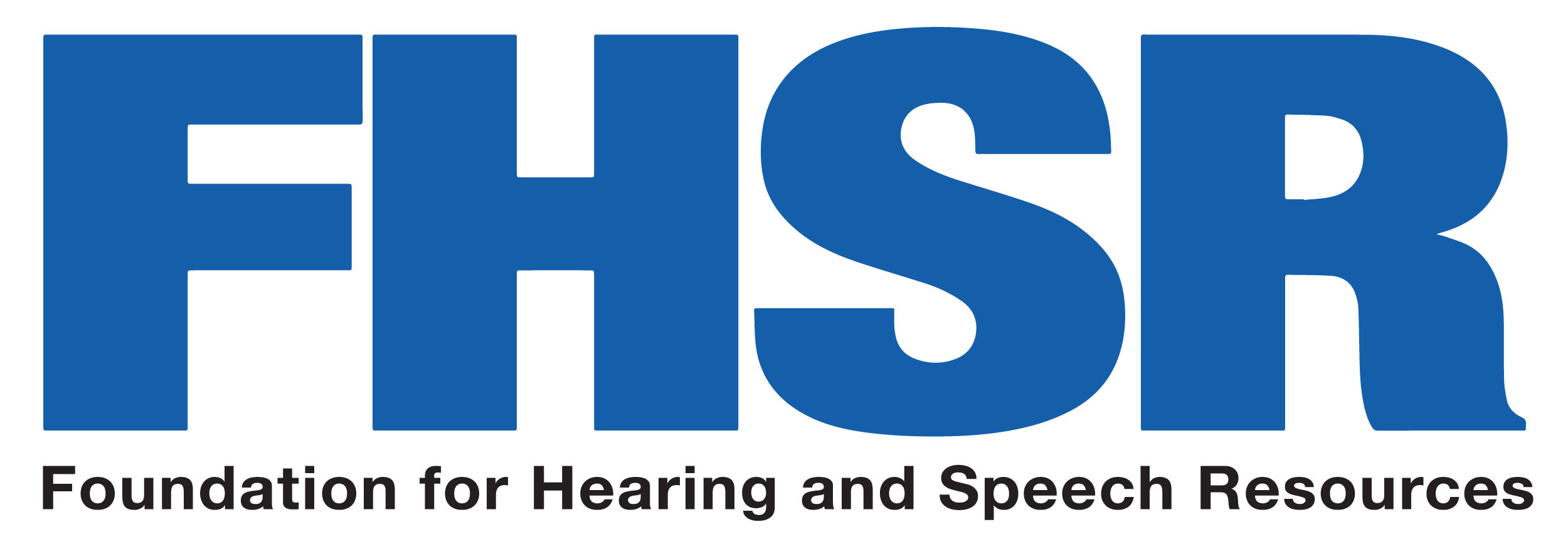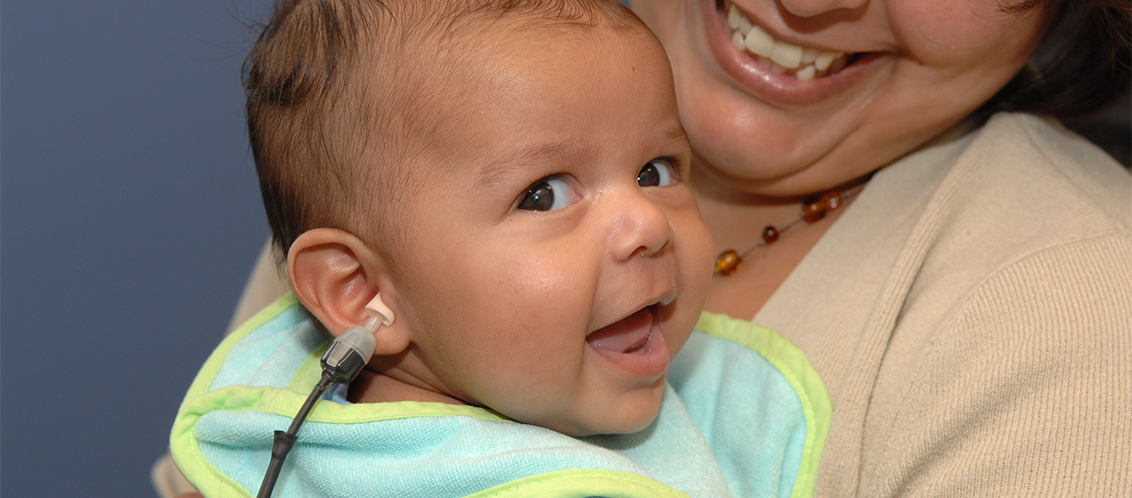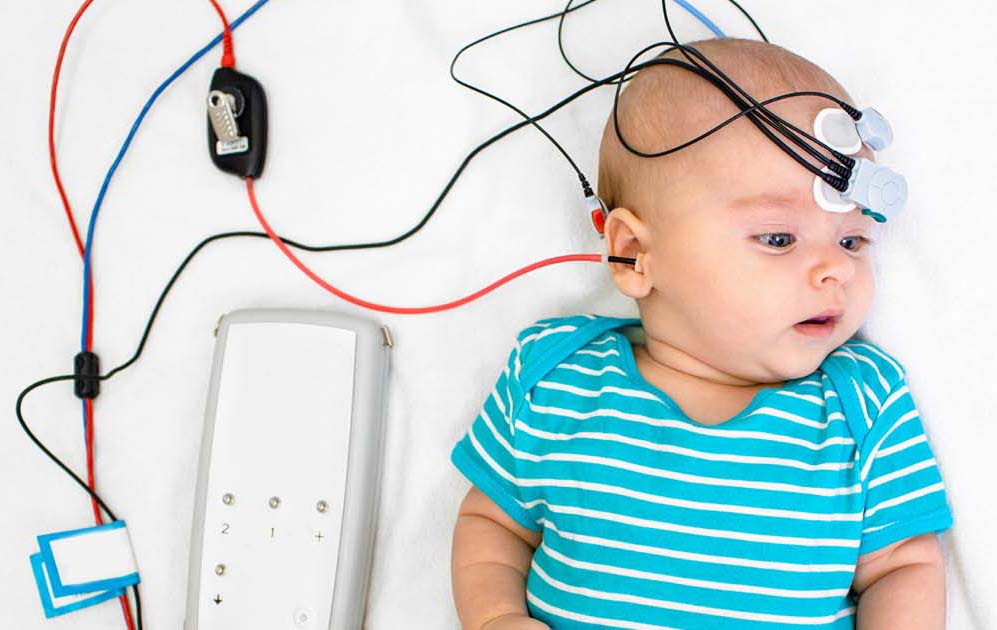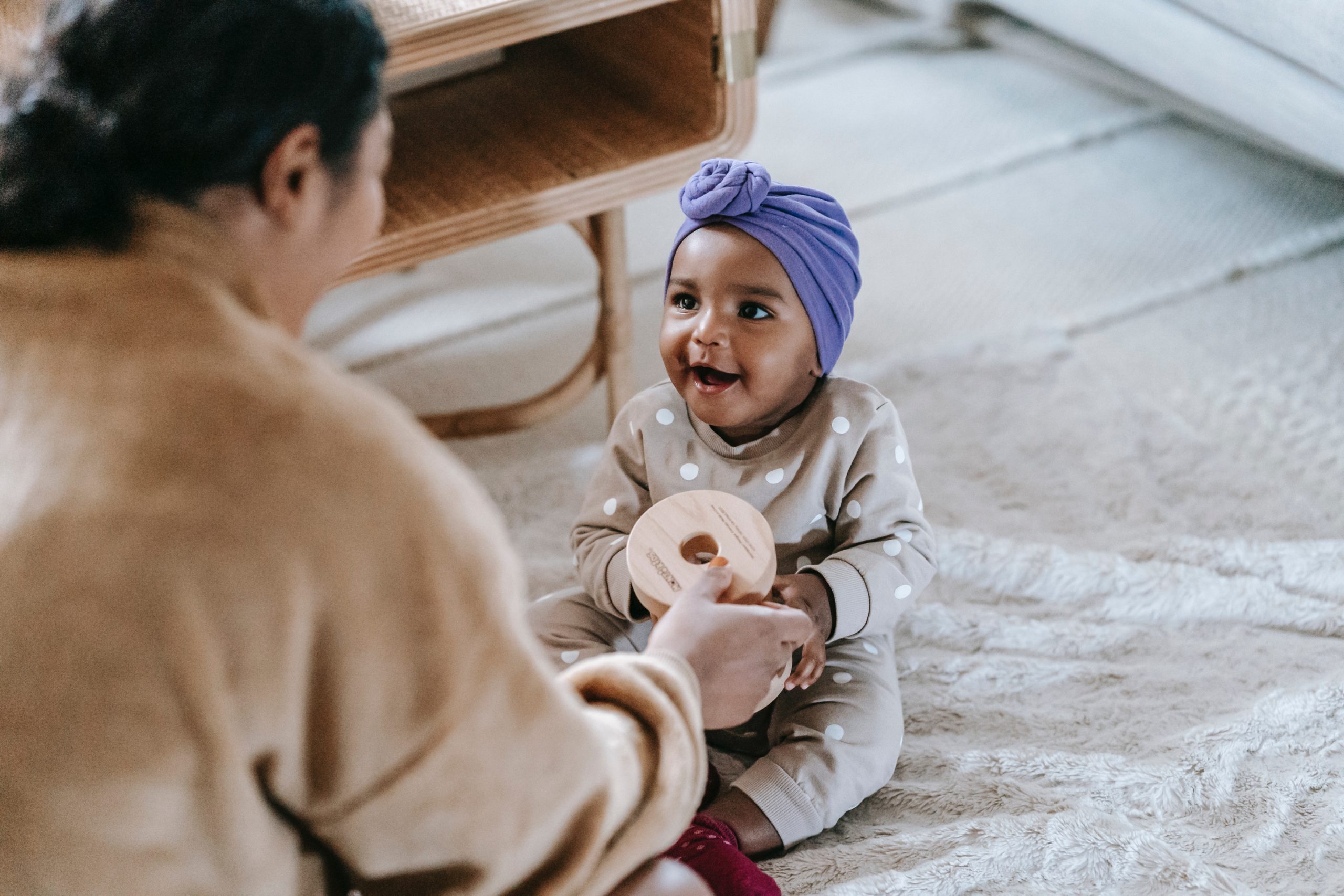BIRTH TO AGE THREE
When your child is first identified as deaf or having a hearing loss, you will be bombarded with a lot of information. Most deaf or hard of hearing children are born to hearing parents, so this journey is often unfamiliar and unexpected. Know that you are not the first family to be traveling this route and that FHSR is here to help you every step of the way.
Ages and Stages was designed for you to explore and learn about a variety of ways you can help your child. We have included materials to help you and your child communicate with each other and the world around you.
Let’s start at the very beginning- the Newborn Hearing Screening and what happens when there are issues with your newborn’s screening.

Early Identification - What to expect
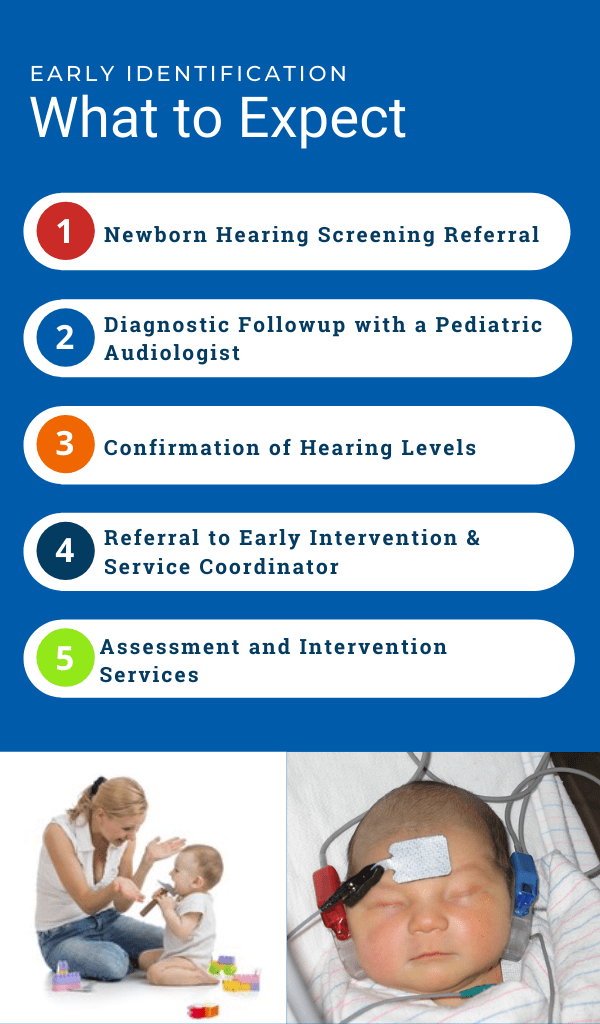
Newborn Hearing Screening Referral
Why are newborn babies screened for hearing loss?
Babies begin developing language and communication skills as soon as they are born, so it’s important to know about your baby’s hearing early. The only way to know for sure is by screening with specialized equipment. From birth, one important way babies can learn is through listening and hearing. Although most infants can hear fine, 1 to 3 of every 1,000 babies born in the U.S. have hearing levels outside the typical range.
When your baby was born, their hearing was screened and you were likely told they failed the screening. Failed! It’s confusing to hear that your child failed a hearing screening. Your child hasn’t failed anything, it simply means that the newborn hearing screening was unable to track the movement of sound within your child’s hearing system. Therefore, it is encouraged that you follow up with a specialist to confirm how your baby’s ears are processing sound. ADDITIONAL RESOURCES
Diagnostic Followup with Pediatric Audiologist:
Additional testing with a diagnostic pediatric audiologist is the next step to tell if your baby has hearing loss or not and what type of loss it is. You may also want to follow up with your baby’s doctor (or an ear, nose, and throat doctor) to perform or order any medical tests needed to find out the cause of the hearing loss. A confirmed hearing loss can be shocking! Give yourself time to process this information.
Confirmation of Hearing Levels:
Knowing what types of hearing levels your child has can help you in learning how to support their language and communication skills as they grow. You will learn about different kinds of services, hearing technology, and communication approaches you can use along the way.
Referral to Early Intervention and Service Coordinator:
As a result of the identification of a hearing loss, you likely will be referred to your local early intervention office (Child and Family Connections). A Service Coordinator will reach out to you to determine if you would like to receive early intervention services within your home.
These services include support from people specialized in working with babies with hearing loss and will work with you to support your baby’s language and communication development.
Assessment and Intervention Services:
To begin receiving early intervention services within your home, your baby must go through an assessment in which various specialists will talk with you and play with your baby to learn more about their hearing levels and your goals for them. Upon qualification, you will be given the choice to opt in and receive services within your home or opt out.

DEVELOPMENTAL MILESTONES
The development of your child through the first few years will set them up for a lifetime of learning and growing. Below are milestones of what most babies are doing at each age.
Taken from https://www.cdc.gov/ncbddd/actearly/milestones/index.html
Social/Emotional Milestones
- Knows familiar people
- Likes to look at self in a mirror
- Laughs
Language/Communication Milestones
- Takes turns making sounds with you
- Blows “raspberries” (sticks tongue out and blows)
- Makes squealing noises
Cognitive Milestones (learning, thinking, problem-solving)
- Puts things in her mouth to explore them
- Reaches to grab a toy she wants
- Closes lips to show she doesn’t want more food
Movement/Physical Development Milestones
- Rolls from tummy to back
- Pushes up with straight arms when on tummy
- Leans on hands to support herself when sitting
Social/Emotional Milestones
- Plays games with you, like pat-a-cake
Language/Communication Milestones
- Waves “bye-bye”
- Calls a parent “mama” or “dada” or another special name
- Understands “no” (pauses briefly or stops when you say it)
Cognitive Milestones (learning, thinking, problem-solving)
- Puts something in a container, like a block in a cup
- Looks for things he sees you hide, like a toy under a blanket
Movement/Physical Development Milestones
- Pulls up to stand
- Walks, holding on to furniture
- Drinks from a cup without a lid, as you hold it
- Picks things up between thumb and pointer finger, like small bits of food
Social/Emotional Milestones
- Notices when others are hurt or upset, like pausing or looking sad when someone is crying
- Looks at your face to see how to react in a new situation
Language/Communication Milestones
- Points to things in a book when you ask, like “Where is the bear?”
- Says at least two words together, like “More milk.”
- Points to at least two body parts when you ask him to show you
- Uses more gestures than just waving and pointing, like blowing a kiss or nodding yes
Cognitive Milestones (learning, thinking, problem-solving)
- Holds something in one hand while using the other hand; for example, holding a container and taking the lid off
- Tries to use switches, knobs, or buttons on a toy
- Plays with more than one toy at the same time, like putting toy food on a toy plate
Movement/Physical Development Milestones
- Kicks a ball
- Runs
- Walks (not climbs) up a few stairs with or without help
- Eats with a spoon

COMMUNICATION & LANGUAGE
Accessing communication and developing language skills are major accomplishments that should occur in the first three years of life. The effect of a child’s hearing loss on communication depends on many factors, such as the degree and type of hearing loss, age of identification, degree of residual hearing, age of the start of intervention, overall general health, and family involvement. Decisions should be made as early as possible regarding how your child will be given full access to language so that the critical years for developing language are best utilized.
What will communication and language look like for your child? It is important to think about if your child will access language and communication using…
It is important to recognize that it is ok to make changes along the way! Your child’s communication needs may change over time, therefore the communication approaches used by you, your child, and your family may change as well.

COMMUNICATING WITH YOUR CHILD
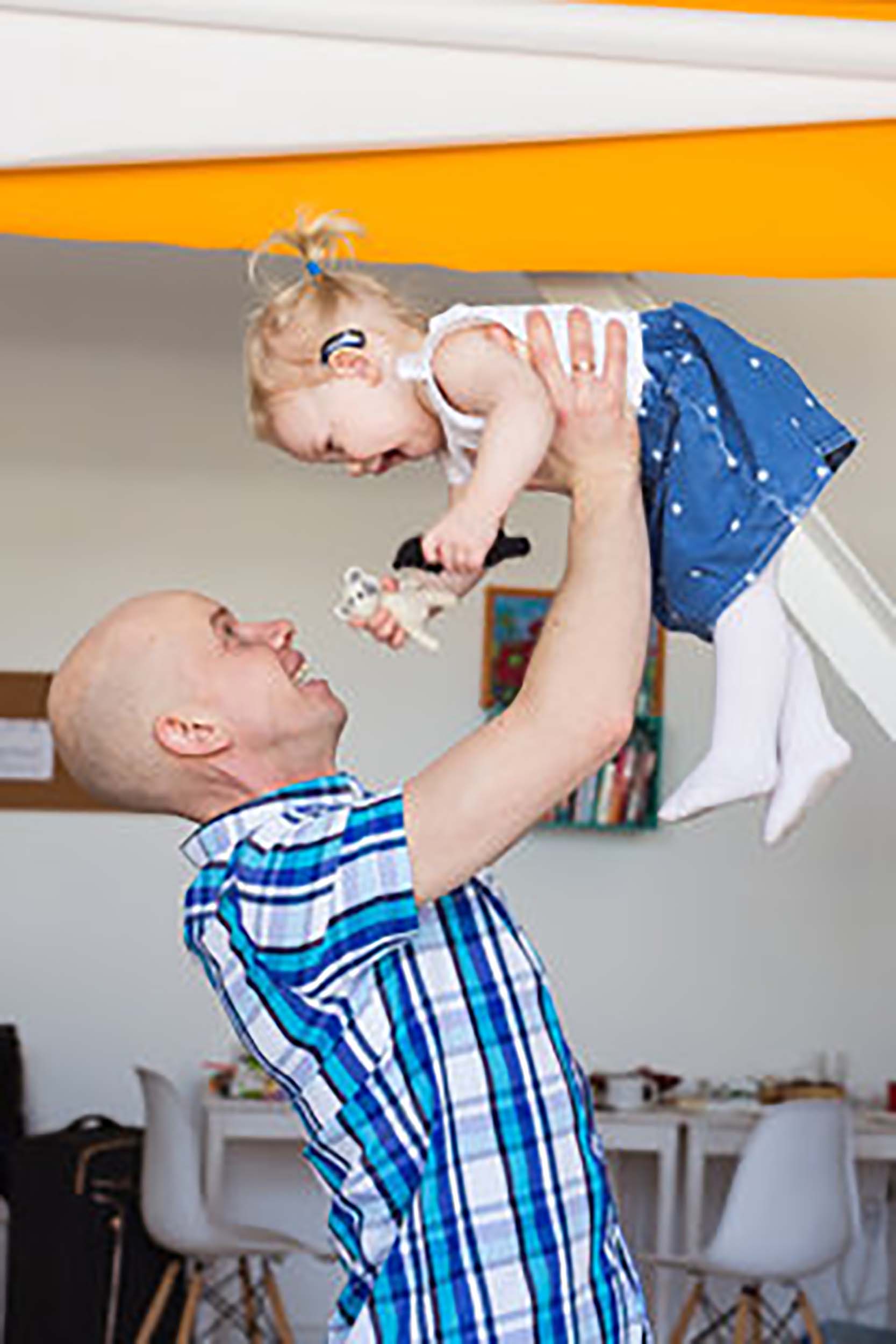
As a parent of a child who was born deaf and received implants at the age of 6 months old, I have a personal passion to give the gift of music to children just like my son. Our early childhood music enrichment classes are some of my fondest memories of his infancy and I know that this in depth exposure assisted him in his listening and language development.
Communication is a critical component of natural language acquisition. We all communicate with each other using both our bodies and our voices. Think about the last time you laughed, cried, did an eye roll, or jumped up and down and clapped. What were you communicating? Our babies look at us in the eye, smile, cry, arch their backs, fuss, giggle…all of those things are a form of communication.
Thinking about your child, there are two kinds of communication: visual and audio. How you and your child will communicate will depend on a variety of factors, including the level of hearing your child has.

VISUAL COMMUNICATION
Visual communication relies on the eyes to receive and understand the message. People who are deaf or hard of hearing can use a variety of visual communication forms. Sign language – Cued Language – Printed language
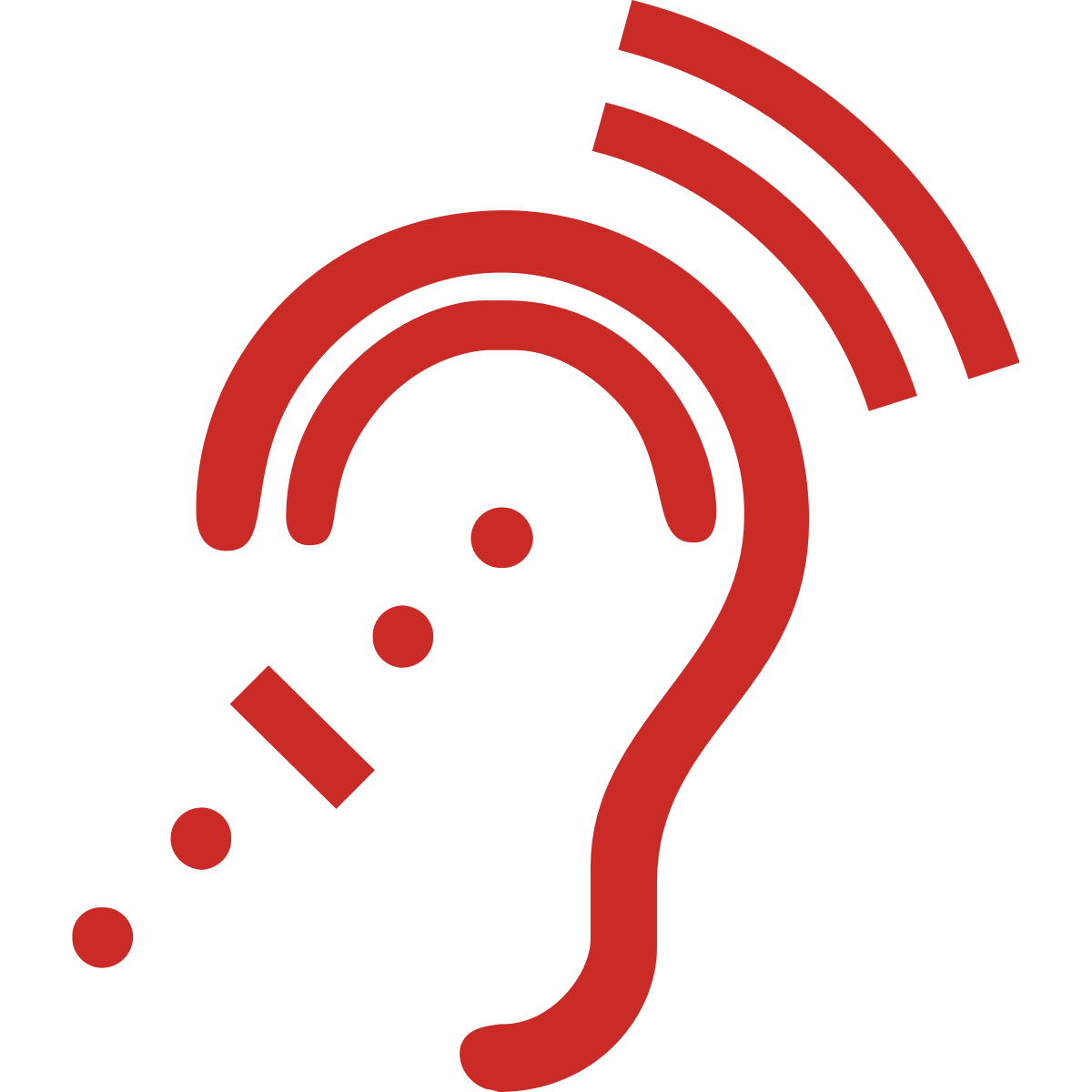
AUDIO COMMUNICATION
Audio communication relies on the ears to hear the spoken message. Often, this is done using the spoken native language of the home. It can also include additional languages spoken within the family.
Connecting with other parents of children with various hearing levels can be a big part of creating your support network of advisors, experts, and other parents so that you can seek information and advice as you determine your next steps. These connections empower you to build your knowledge base and feel more comfortable in making decisions as you move forward.
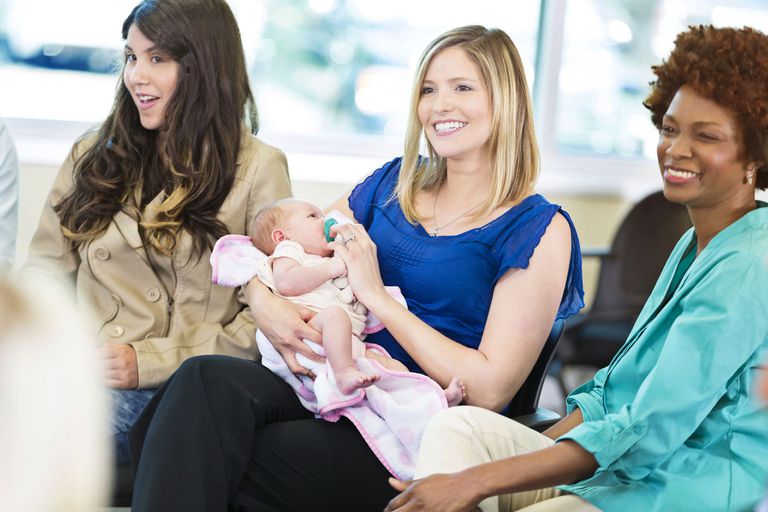
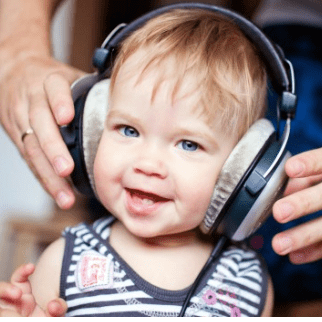
Every contribution to FHSR helps improve the lives of children with hearing loss.
Hearing Technology is changing rapidly from captioning to cochlear implants, loops to language software. Follow our blog to learn more and donate to the Loaner Hearing Aid program to help keep the technology available for all children with hearing loss.
We hope you will consider making a gift to support these children. Thank you!
